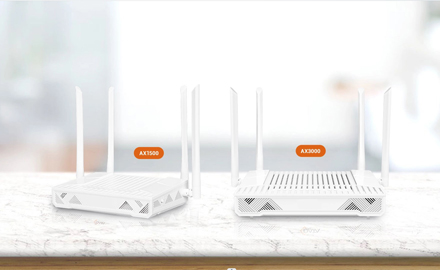XGSPON, or 10-Gigabit-capable Passive Optical Network, represents a significant advancement in fiber optic communication technology, specifically in the realm of passive optical networks (PONs). PONs are a type of network architecture that leverages optical fibers to distribute data, voice, and video signals from a central location to multiple end-users. XGSPON is an evolution of the Gigabit-capable PON (GPON) standard, designed to provide higher data rates and enhanced performance.
Key Components and Architecture:
XGSPON comprises several key components, including optical line terminals (OLTs) at the service provider's central office and optical network units (ONUs) at the customer premises. The network is passive because it relies on unpowered optical splitters to distribute signals among multiple users, reducing the need for active electronic components in the distribution network.
The XGSPON architecture includes downstream and upstream transmission paths. In the downstream direction, data flows from the OLT to the ONUs, while in the upstream direction, data travels from the ONUs back to the OLT. This bidirectional communication enables the delivery of high-speed broadband services.
Data Rates and Wavelengths:
One of the primary advantages of XGSPON is its capability to deliver symmetrical and asymmetrical data rates of up to 10 gigabits per second (Gbps) in both downstream and upstream directions. This high-speed data transmission is achieved by using different wavelengths of light for upstream and downstream communication.
In the downstream direction, XGSPON typically utilizes wavelengths in the range of 1577 to 1587 nm, while the upstream direction operates at wavelengths ranging from 1264 to 1284 nm. This wavelength separation enables efficient bidirectional communication without interference.
Protocols and Standards:
XGSPON adheres to standardized protocols, ensuring interoperability and compatibility among different vendors' equipment. The International Telecommunication Union (ITU) is responsible for defining the standards for PON technology. In the case of XGSPON, the ITU-T G.987 series of recommendations specify the technical details and requirements for the implementation of this technology.
Benefits of XGSPON:
1. Increased Data Rates: XGSPON provides a substantial increase in data rates compared to its predecessors, making it well-suited for bandwidth-intensive applications such as high-definition video streaming, online gaming, and other data-hungry services.
2. Symmetrical and Asymmetrical Services: The symmetrical data rates offered by XGSPON make it suitable for applications that require robust upstream and downstream performance, such as video conferencing and cloud-based services.
3. Scalability: XGSPON is designed to be scalable, allowing service providers to meet the growing bandwidth demands of their customers by upgrading the network infrastructure without requiring significant changes to the existing architecture.
4. Fiber Efficiency: XGSPON optimizes the use of optical fiber by enabling the delivery of high-speed services to multiple users over a single fiber strand, reducing the need for additional physical infrastructure.
5. Low Latency: The optical nature of the communication in XGSPON results in low latency, making it suitable for applications that require real-time responsiveness, such as online gaming and video conferencing.
Challenges and Considerations:
While XGSPON offers numerous benefits, its deployment also comes with challenges. These include the initial cost of infrastructure investment, the need for skilled technicians for installation and maintenance, and the potential for service disruptions in the case of fiber cuts or other physical damage.
Conclusion:
XGSPON represents a crucial milestone in the evolution of passive optical networks, offering gigabit-level speeds and bidirectional communication for a wide range of broadband services. As demand for high-speed and reliable internet connectivity continues to grow, XGSPON stands out as a key technology enabling service providers to meet these demands while ensuring scalability, efficiency, and performance in their fiber optic networks.
 The Difference Between AX1800 ONU and AX3000 ONU
The Difference Between AX1800 ONU and AX3000 ONU
 How are Huawei OLTs Classified?
How are Huawei OLTs Classified?
 The Future Trend of Optical Line Terminals (OLTs)
The Future Trend of Optical Line Terminals (OLTs)
 The Difference Between ONU and ONT
The Difference Between ONU and ONT